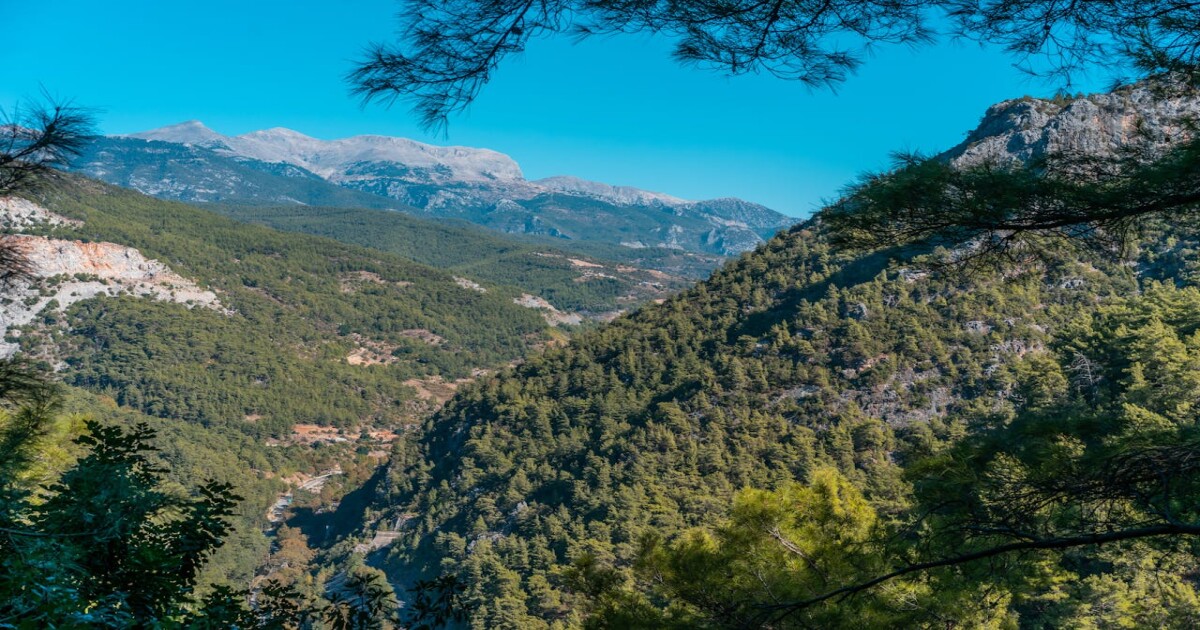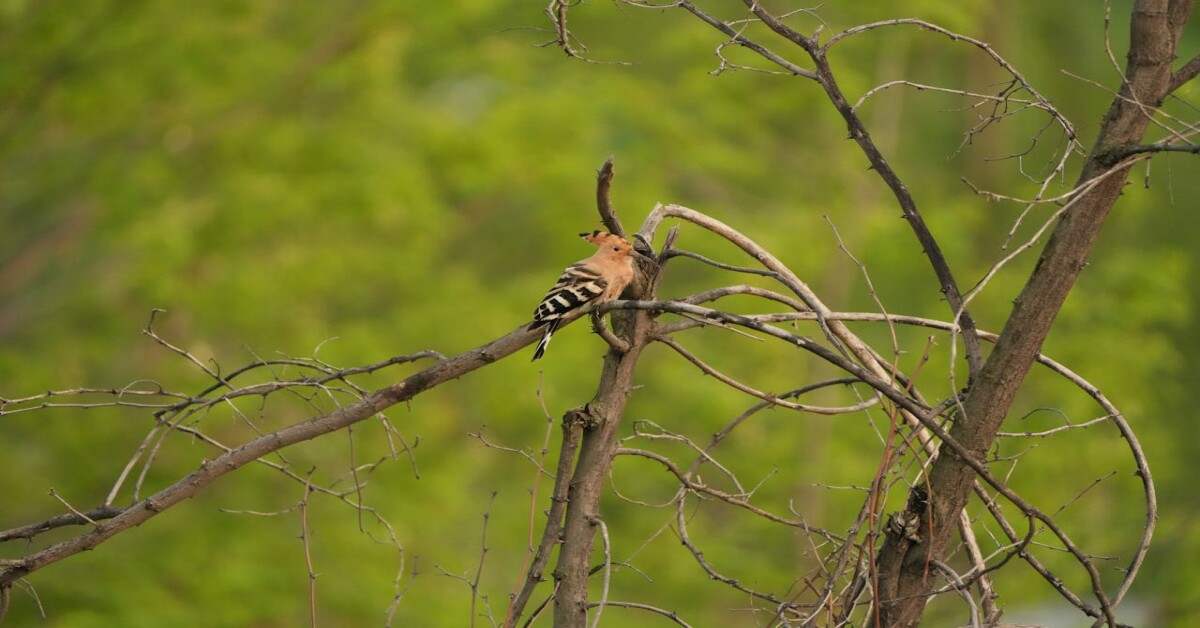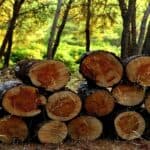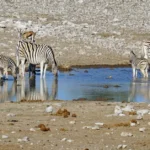Temperate coniferous forests are vast ecosystems dominated by evergreen trees like pines, firs, and spruces. These forests are found in regions with cooler climates, such as North America, Europe, and parts of Asia. They play a vital role in balancing Earth’s climate by storing carbon and supporting diverse wildlife.
These forests are essential not only for wildlife but also for the global environment. Their dense tree cover helps maintain the water cycle and reduce soil erosion. Besides, they provide resources like timber and act as natural carbon sinks, reducing the effects of climate change.
In this post, we will explore the climate and vegetation of temperate coniferous forests. Understanding these key elements is crucial to appreciating the importance of these forests and the need to protect them for future generations.
What is Temperate Coniferous Forest?
All temperate coniferous forests are coniferous forests, but not all coniferous forests are temperate. Coniferous forests can be found in a wider range of climates, while temperate coniferous forests are specifically adapted to temperate regions.
These forests exist in areas with distinct seasonal changes, characterized by cold winters and mild summers. The trees in these forests are evergreen, meaning they keep their leaves year-round, which helps them survive harsh climates.
Temperate coniferous forests are unique due to their dense tree cover and cool environments. Unlike tropical forests, which experience constant warm temperatures, temperate coniferous forests thrive in places with more temperature variation.
The forest floor is usually covered with a thick layer of needles from the evergreen trees, and mosses and ferns are commonly found in the understory. These features set them apart from temperate deciduous forests, where trees shed their leaves annually.
One of the defining characteristics of temperate coniferous forests is the dominance of coniferous tree species, such as pines, firs, and spruces. These trees are specially adapted to conserve water, thanks to their needle-like leaves. Their thick bark also protects them from cold and harsh winds.
This dominance of conifers makes these forests a vital part of the global carbon cycle and supports various wildlife species that depend on these trees for food and shelter.
Key Features of Temperate Coniferous Forests
Temperate coniferous forests possess several distinct features that make them unique. Here are the key characteristics:
Evergreen Trees: The forests are dominated by coniferous species like pine, fir, and spruce.
Cool Climate: These forests are found in temperate zones with cold winters and mild summers.
Acidic Soil: The soil in these forests is often acidic and nutrient-poor, resulting from the buildup of needle litter.
Diverse Understory: Ferns, mosses, and shrubs form the forest’s understory, thriving in the cool, damp conditions.
Thick Canopy: The dense canopy reduces sunlight penetration to the forest floor, making it cooler and more humid.
Temperate coniferous forests are part of the broader forest ecosystem that includes tropical, subtropical, and deciduous forests. They are critical for biodiversity, as they host unique plant and animal species.
Additionally, these forests contribute to the global carbon cycle by storing large amounts of carbon in their biomass, helping mitigate climate change. Their thick canopies also regulate temperature, ensuring cooler environments for the species that inhabit them.

Geographic Distribution of Temperate Coniferous Forests
Temperate coniferous forests are spread across various parts of the world, primarily in the Northern Hemisphere. They can be found in regions of North America, particularly in the Pacific Northwest of the United States and Canada. In Europe, they stretch across parts of Scandinavia and extend into Russia.
Additionally, temperate coniferous forests are found in parts of Asia, especially in Japan and China. These forests thrive in regions with seasonal climates and adequate rainfall.
These forests typically occur between latitudes 30° and 60° north and south of the equator. The specific latitudes provide a cool climate, which is essential for the growth of coniferous trees. These forests also thrive at various altitudes, depending on the region.
For example, in North America, temperate coniferous forests can be found from sea level up to mountainous regions. Altitude plays a key role in determining the types of species that can survive in these areas.
The geographical distribution of temperate coniferous forests ensures their importance to the planet. Their location in higher latitudes means they serve as critical carbon sinks, absorbing large amounts of carbon dioxide.
The fact that they grow in diverse environments, from coastal regions to high-altitude areas, adds to their ecological significance.
Also Read: Temperate Deciduous Forest Features and Distribution
Climate of Temperate Coniferous Forests
Temperate coniferous forests are characterized by a unique climate that plays a major role in shaping their ecosystem. These forests experience cold winters with temperatures often dropping below freezing, and mild summers, where temperatures range between 10°C and 20°C.
The cooler climate is one of the primary reasons coniferous trees thrive in these areas. Their needle-like leaves help conserve water, which is crucial during dry or cold months when water is less available.
Precipitation in temperate coniferous forests varies by season. These forests receive ample rainfall during the summer months, helping the vegetation grow and maintain its lush greenery. However, in winter, precipitation often comes in the form of snow, blanketing the forest floor.
The snow acts as an insulating layer, protecting the roots of trees and smaller plants from freezing temperatures. This seasonal variation in precipitation helps sustain the forest’s ecosystem throughout the year.
Temperature also plays a critical role in the ecological balance of temperate coniferous forests. The relatively mild summers allow for slow and steady growth of vegetation, while cold winters slow down plant metabolism, preserving energy.
This unique climate supports a variety of species that have adapted to survive in these fluctuating conditions, from large mammals to small insects, all relying on the stable environment created by the forest’s climate.

Seasonal Changes and Their Effects on Forests
Seasonal changes in temperate coniferous forests have a profound effect on both vegetation and wildlife. During the winter months, snowfall covers the forest, and temperatures drop significantly.
This change limits the growth of plants, as they enter a period of dormancy to conserve energy. Animals in the forest also adapt to the cold; many hibernate, while others grow thicker fur to stay warm.
In spring and summer, the snow melts, and the forest comes back to life. Trees begin producing new needles, and the understory vegetation flourishes. The increased daylight and milder temperatures create ideal conditions for plant growth.
Animals also become more active during these seasons, as food becomes more abundant, and they prepare for the next winter.
The transition from summer to fall marks the preparation for the harsh winter ahead. Coniferous trees retain their needles, allowing them to continue photosynthesis at reduced rates, even during colder months.
Many animals start gathering food to store for winter or increase their fat reserves. This cyclical pattern ensures the survival of both plants and animals, even in the challenging conditions of the temperate coniferous forests.
Soil and Terrain in Temperate Coniferous Forests
The soil in temperate coniferous forests is typically acidic and nutrient-poor. This is due to the accumulation of fallen needles from coniferous trees, which create a thick, decomposing layer of organic material.
The acidic nature of the soil limits the growth of many plant species, but it is ideal for the evergreen trees that dominate these forests. Mosses, ferns, and shrubs also thrive in these soil conditions, forming part of the forest’s understory.
The terrain of temperate coniferous forests can vary widely depending on the region. In coastal areas, the forests may grow on flat, low-lying land, while in mountainous regions, the trees can be found on rocky slopes.
These forests are highly adaptable and can grow in challenging terrains, including steep hillsides and areas with thin soil layers. This adaptability allows them to flourish in diverse environments, from coastal plains to high-altitude mountain ranges.
The combination of acidic soil and varied terrain helps shape the unique ecosystem of temperate coniferous forests. The forests’ ability to grow in nutrient-poor soils ensures they can occupy regions where other forest types may struggle to survive.
Their resilience in difficult terrain further highlights the importance of these forests in maintaining ecological balance across a range of landscapes.

Vegetation in Temperate Coniferous Forests
Temperate coniferous forests are home to trees like pines, firs, and spruces. These trees are uniquely suited for colder environments. Their needle-like leaves help conserve water, an essential adaptation in freezing temperatures.
Additionally, thick bark acts as insulation, protecting the trees from harsh winter conditions. Beneath the towering conifers, the forest floor supports a variety of understory vegetation. This includes shrubs, mosses, and ferns, which thrive in the damp and shaded environment.
These plants provide shelter for small animals and insects, playing a crucial role in maintaining the forest’s biodiversity.
Adaptations of Vegetation to Climate
The vegetation in temperate coniferous forests has developed special adaptations to survive the cold. For instance, trees have needle-shaped leaves to reduce water loss, which is critical during winter when water is scarce. Many species also go dormant during the colder months to conserve energy.
An interesting example is how coniferous trees remain evergreen year-round. This allows them to carry out photosynthesis even during winter, making the most of limited sunlight.
These adaptations enable the forest’s vegetation to endure extreme seasonal changes and thrive in its unique climate.
Wildlife and Their Relationship with Vegetation
Temperate coniferous forests support a diverse range of wildlife, including bears, wolves, and various bird species such as woodpeckers, crossbills, hawks, and owls. The forest’s vegetation forms the foundation of the food chain. For instance, the trees provide shelter and food for birds, while the berries, leaves, and smaller plants feed herbivores.
Larger animals, like bears, rely on both plants and smaller animals for sustenance. The thick tree canopy offers protection for many species, creating a safe habitat that sustains life throughout the year.

Ecological Importance of Temperate Coniferous Forests
Temperate coniferous forests play a vital role in carbon sequestration, absorbing large amounts of CO₂ from the atmosphere. This helps mitigate climate change by reducing greenhouse gas levels. These forests also contribute significantly to oxygen production, supporting life on Earth.
Additionally, they regulate the local water cycle by capturing rainfall and maintaining groundwater levels. This ensures a stable water supply for nearby ecosystems and human settlements.
The dense canopy of coniferous trees helps moderate temperatures, providing cooler environments in the summer and retaining heat in the winter.
Human Impact on Temperate Coniferous Forests
Human activities such as deforestation and logging have severely impacted temperate coniferous forests. These actions destroy habitats and disrupt ecosystems. Expanding human settlements also encroach upon these forests, leading to further degradation.
However, conservation efforts are underway to protect these important ecosystems. Governments and environmental organizations are promoting sustainable logging practices and reforestation programs.
In addition, the establishment of protected areas and national parks helps preserve these forests and the wildlife they support. Without these efforts, the future of temperate coniferous forests would be at risk.
Conclusion
The unique climate and vegetation of temperate coniferous forests make them essential to the Earth’s ecological balance. Their cold-resistant trees and diverse understory plants provide habitats for a wide range of wildlife.
This complex relationship between climate and vegetation highlights the importance of these forests. Protecting them is crucial not only for biodiversity but also for maintaining the planet’s health.
The need for conservation is more urgent than ever as human activities continue to threaten these valuable ecosystems.








